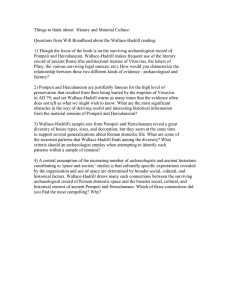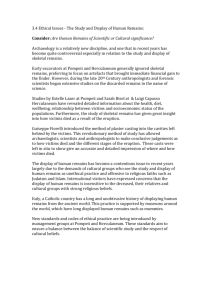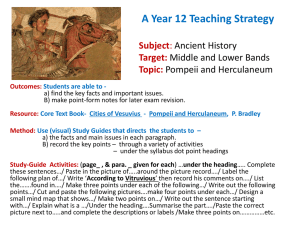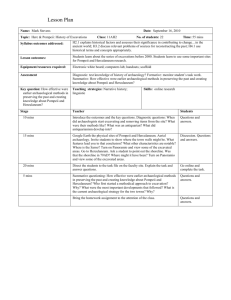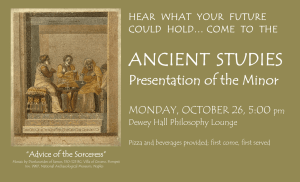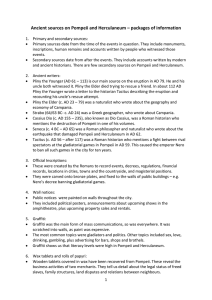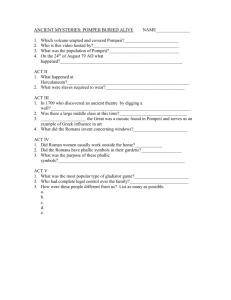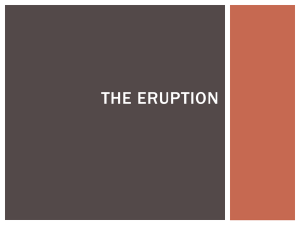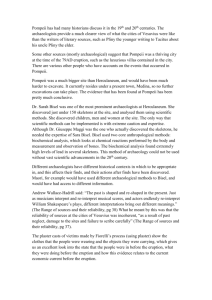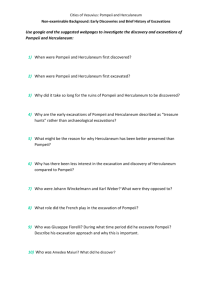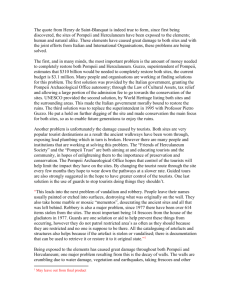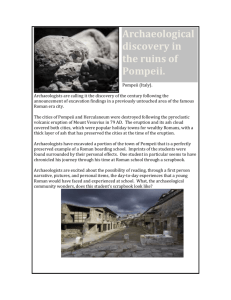Pompeii and Herculaneum Sources
advertisement
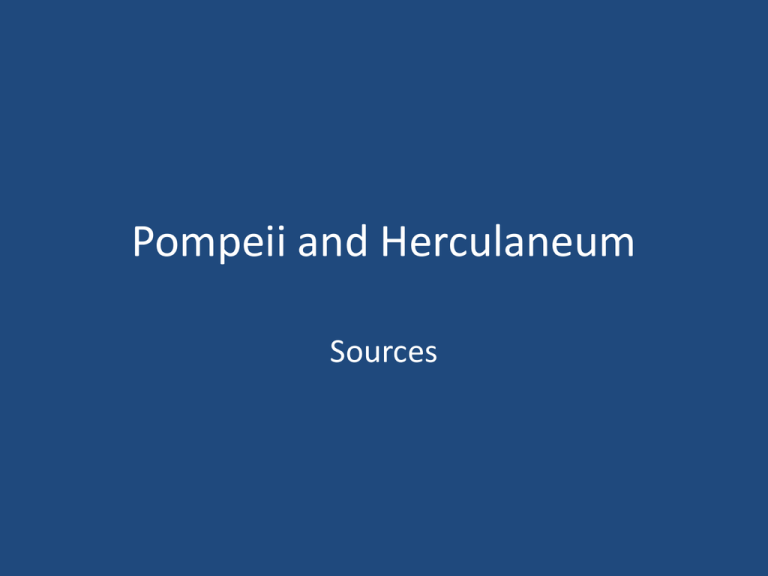
Pompeii and Herculaneum Sources The range of sources • • • • • • Architectural structures and spaces at Pompeii and Herculaneum: domestic dwellings places of worship places of work places of entertainment shops and public spaces The variety of decorative arts: • frescoes • mosaics • sculptures • furniture Written sources – • inscriptions • public notices • graffiti • papyri rolls • wax tablets Essential Knowledge • • • • • • 1.You should be aware of the following – What type of archaeological source is it ? a private building a public building a monument an artefact • • • • What type of written source is it ? a literary source an epigraphic source (inscription) a numismatic source (coins or medals) • Has the source been dated ? • Is it a primary or secondary source ? • In the case of an archaeological source, where was it located ? • In what state of preservation is the source ? • If it is a line drawing or a photograph, how accurate is it ? • What information does the source not provide ? Archaeological sources • the study of human remains can provide information on gender, age, appearance, general state of health, a probable cause of death • everyday objects provide historians with a snapshot of daily life • buildings give some idea of the big-picture. However, much of the information available is based on subjective impressions. • wax tablets provide information about business and legal activities and family structures. Epigraphic sources • wall writings offer a record of electoral slogans, gladiatorial programs and various other events • formal inscriptions throw some light on the system of government, the social structure and social change Written sources • • • • • • Cicero [c.106-43 BC] – provides information about political activities in Pompeii post 80 BC Strabo [c.63 BC-21 AD – provides descriptions of Vesuvius prior to the eruption and of the Sarno Valley Seneca [c.4 BC-65 AD] – provides information about the earthquake of AD 62 which destroyed Pompeii and Herculaneum Dio Cassius [c.150-235 AD] – provides information about the eruption 100 years after the event Tacitus [c.55-120 AD] – he alludes briefly to the eruption in his prologue. In his Historiae , he may have made reference to Pliny’s description of the eruption but this work is lost. Pliny the Younger [c.61-113 AD] In assessing the reliability of sources the following issues need to be considered – • the context in which the source is found – artefacts must be related to other things around them • the reliability of dating methods • artefacts or organic materials are not in themselves evidence, they can be interpreted in different ways by archaeologists and historians • both sites are only partially excavated and there are, therefore, gaps in the evidence available
